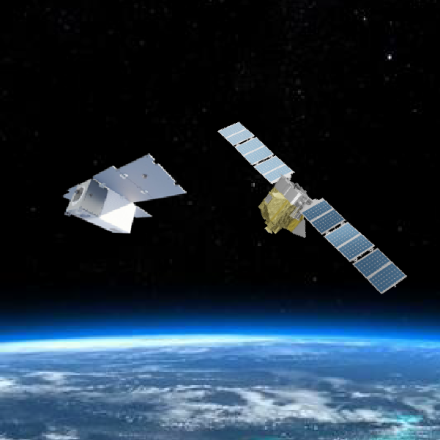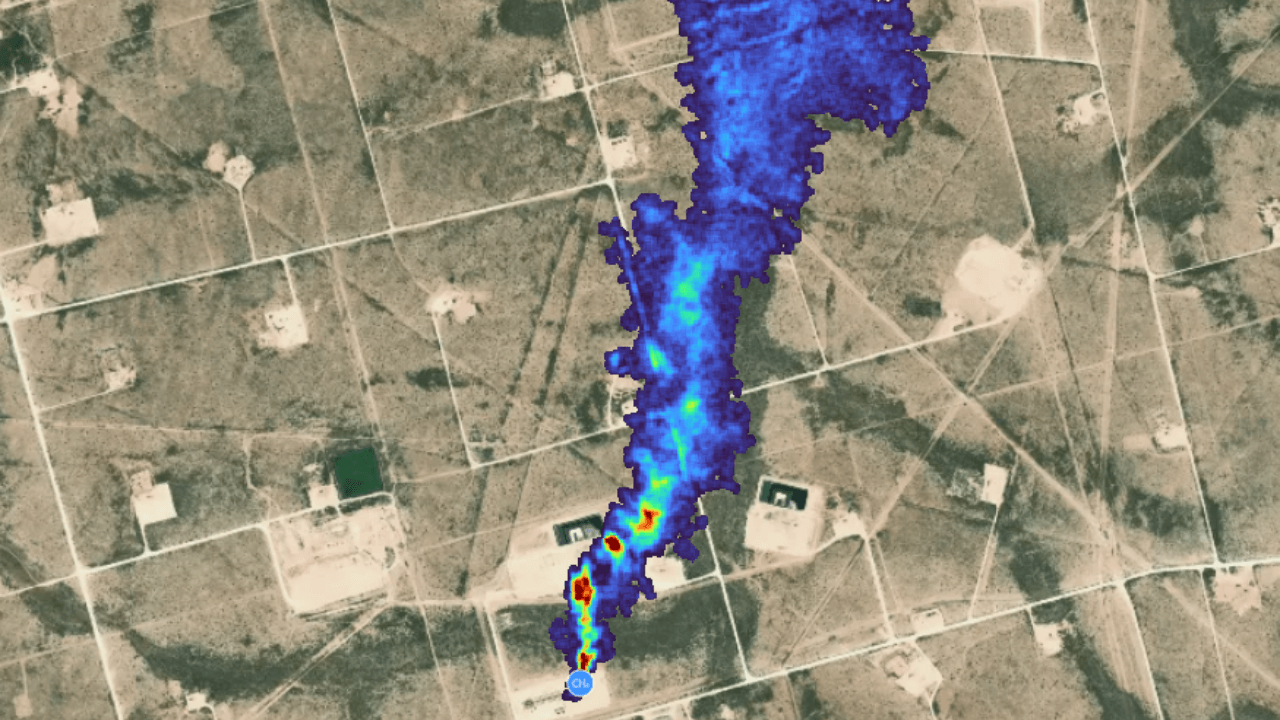The MethaneSAT and Carbon Mapper Coalition satellite programs will bring new capabilities to meet the need for richer emissions data. MethaneSAT is designed to identify where emissions are occurring, how large they are, and how they change over time at national, regional, basin and sub-basin scales. Carbon Mapper Coalition’s Tanager satellites will drill down to individual facilities to provide the granularity needed for operators and regulators to quickly find and fix large emission events.
Together they will provide a fuller, more actionable picture for stakeholders.
MethaneSAT Takes in the Big Picture
Launched in March 2024, MethaneSAT is designed to precisely measure methane levels with high spatial resolution over wide areas (such as basin, state or country). It can detect in aggregate the myriad small emissions other satellites can’t see today. It will precisely quantify the total emissions originating from wide regions and jurisdictions – important data we simply don’t have today.
MethaneSAT has a wide field of view, with each target area measuring 125 miles x 125 miles (200km x 200 km) along with unrivaled sensitivity, enabling it to see extremely small differences in methane concentrations. Using sunlight reflected off the Earth’s surface, it is designed to quantify differences in methane concentrations as small as three parts per billion from an altitude of 590 kilometers.
Advanced analytics developed for the mission will provide the rate of emissions based on the methane concentrations, winds, and atmospheric conditions, allowing MethaneSAT to identify and quantify small, diffuse emissions not seen by other satellites. It will also detect high-emitting concentrated point sources.
This will let MethaneSAT quantify total emissions in near real time. For the first time, stakeholders will see the whole picture. Orbiting every 90 minutes, MethaneSAT will capture 30 targets a day, nearly 11,000 a year. Sophisticated targeting will enable MethaneSAT to characterize methane emissions from areas producing greater than 80% of global oil and gas production, while also looking systematically at agricultural activities and other emission sources.
In addition to parent organization EDF – with its long record of policy advocacy and industry engagement, plus deep expertise in methane and climate science – MethaneSAT partners include the Harvard University’s School of Engineering and Applied Sciences, the Smithsonian Astrophysical Observatory and the New Zealand Space Agency. The combined team of over 70 experts worldwide has experience in spaceflight, remote sensing and data analytics, as well as the experience needed to turn data into action.
Carbon Mapper Goes in for the Closeup
Sometimes in a broad panorama you might spot something of interest you need to zoom in on to see in much greater detail. The Carbon Mapper Coalition satellites act like a zoom lens, revealing intricate details of the scene.
In 2021, building on a long history of pilot programs using aircraft, the nonprofit organization Carbon Mapper and partners announced a unique public-private coalition to develop and deploy two Tanager satellites with capabilities to detect, pinpoint and quantify high emission methane and carbon dioxide sources at the scale of individual facilities.
The first two Tanager satellites are designed to provide insights on problems at specific sources at a 30-meter resolution. Detections from Tanager will allow Carbon Mapper to pinpoint and quantify emissions from facilities or pieces of equipment (like pipelines or flares) emitting over 100 kg of methane per hour, and attribute emissions to their specific source within 50 meters.
This can help operators find and fix leaks quickly, diagnose root causes for emissions events, inform solutions and verify reductions.
The Tanager satellites will map high priority emitting areas with an emphasis on infrastructure including oil and gas fields, pipelines, refineries, power plants and operations with large concentrations of livestock and areas with landfills, wastewater treatment plants and natural gas distribution systems. With the goal to scale to a constellation of multiple satellites, Carbon Mapper aims to detect and track up to 90% of high emission sources globally with near-daily frequency.
Led by the nonprofit Carbon Mapper, coalition partners include NASA JPL, Planet Labs, RMI, Arizona State University and philanthropic supporters among others. This unique partnership brings together diverse technical, scientific, engineering and policy expertise to accomplish bold emission reduction objectives.
Data in Demand
There is a wide and growing range of stakeholders eager for the information that MethaneSAT and Carbon Mapper will provide. Both programs are focused on making the data actionable by oil and gas operators and investors. We also expect our emissions data to be a valuable resource for the world’s major natural gas importers, who are planning to use emissions data to differentiate across suppliers.
Organizations such as the International Energy Agency and the International Methane Emissions Observatory created by the UN Environment Programme have indicated plans to use MethaneSAT and other satellite data to produce global integrated data products and analyses. The U.S. EPA, the European Commission and several U.S. states also plan to utilize the data as it becomes available.
MethaneSAT will also play a central role in a watchdog effort backed by Bloomberg Philanthropies to create transparency and independent accountability around the new Oil and Gas Decarbonization Charter announced at COP28, under which more than 50 of the world’s top oil and gas producers are pledging to virtually eliminate methane emissions and routine flaring by 2030. Data from Carbon Mapper and other satellites will be critical to this effort.
Carbon Mapper is showing the power of emissions data from air and space with thousands of high emission sources available today on their public data portal. Leveraging years of aerial surveys as well as new observations from NASA’s EMIT instrument and soon Tanager emissions data, facility operators, researchers, journalists, nonprofits and regulators are already using this data to mitigate emissions on the ground.
The Carbon Mapper data portal also offers a public API, making it easier for researchers and developers to integrate this data into their own systems and applications.
In February, MethaneSAT announced that Google will provide key resources to make processing and visualization of MethaneSAT faster and more accessible. This includes cloud computing to process the MethaneSAT data stream, and building on the global database of oil and gas infrastructure used to track emission sources. MethaneSAT data will also be available on Google Earth Engine, providing smoother integration with users’ own platforms.
Working Together for Action & Accountability
We’re often asked: Why two satellite missions to drive down methane? The answer is that there is no one technology or capability that can see all the methane at the multiple scales required to quickly drive emissions reductions. These two systems fill critical gaps in our understanding of the patterns of current methane emissions and together will quantify and track emissions as well as provide the data to catalyze deeper, faster emissions reductions.
Providing transparent data at different levels of granularity is half the battle. Ensuring that the information gets into the right hands to catalyze deeper, faster emissions reductions is just as important.
Building on the success of past collaborations like the PermianMAP project, EDF and Carbon Mapper are working together, alongside other partners, to translate this data into action through leading scientific expertise, stakeholder engagement and decision-useful insights for policymakers, harnessing the power of emissions transparency to deliver that impact globally.
Methane data and insights from these satellites will help establish new frameworks for action and accountability. With their complementary new capabilities, our unique combination of high sensitivity, multiple spatial resolutions, and frequent sampling will yield insight needed to guide critical decision making.

